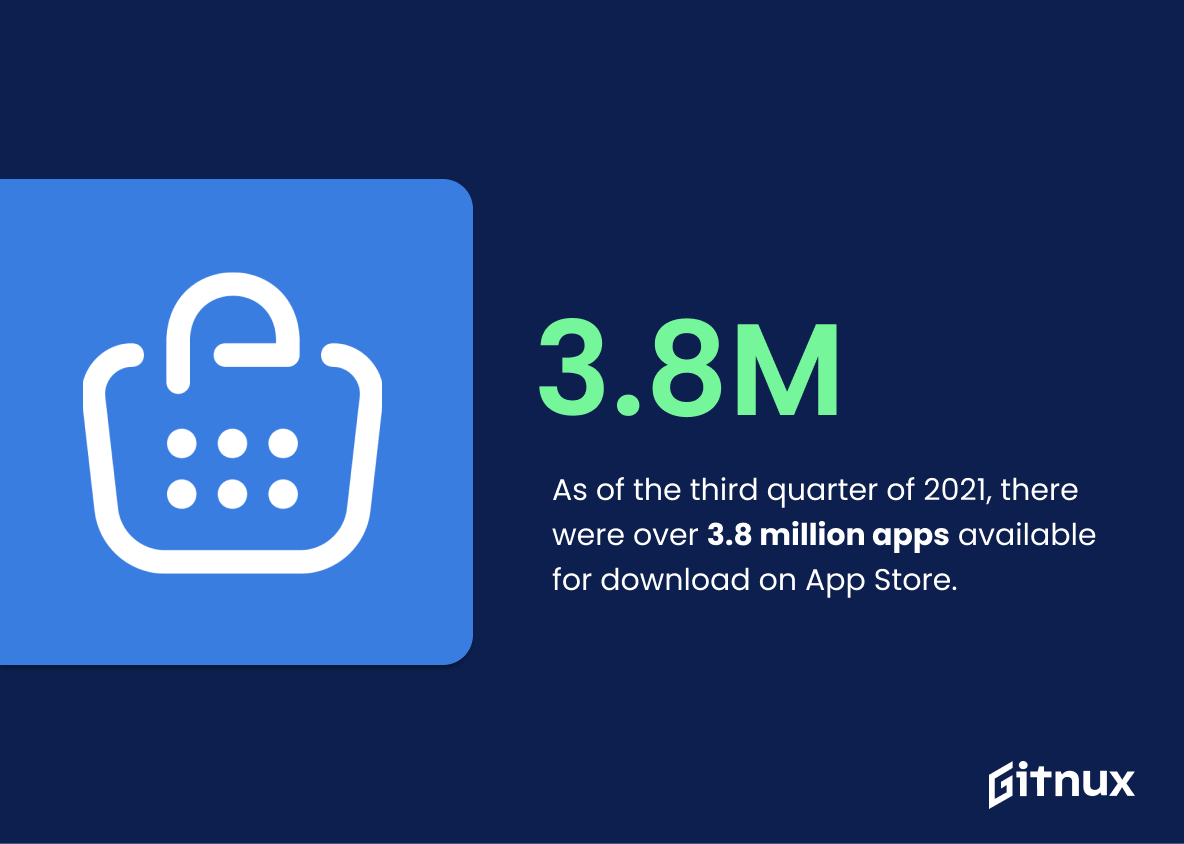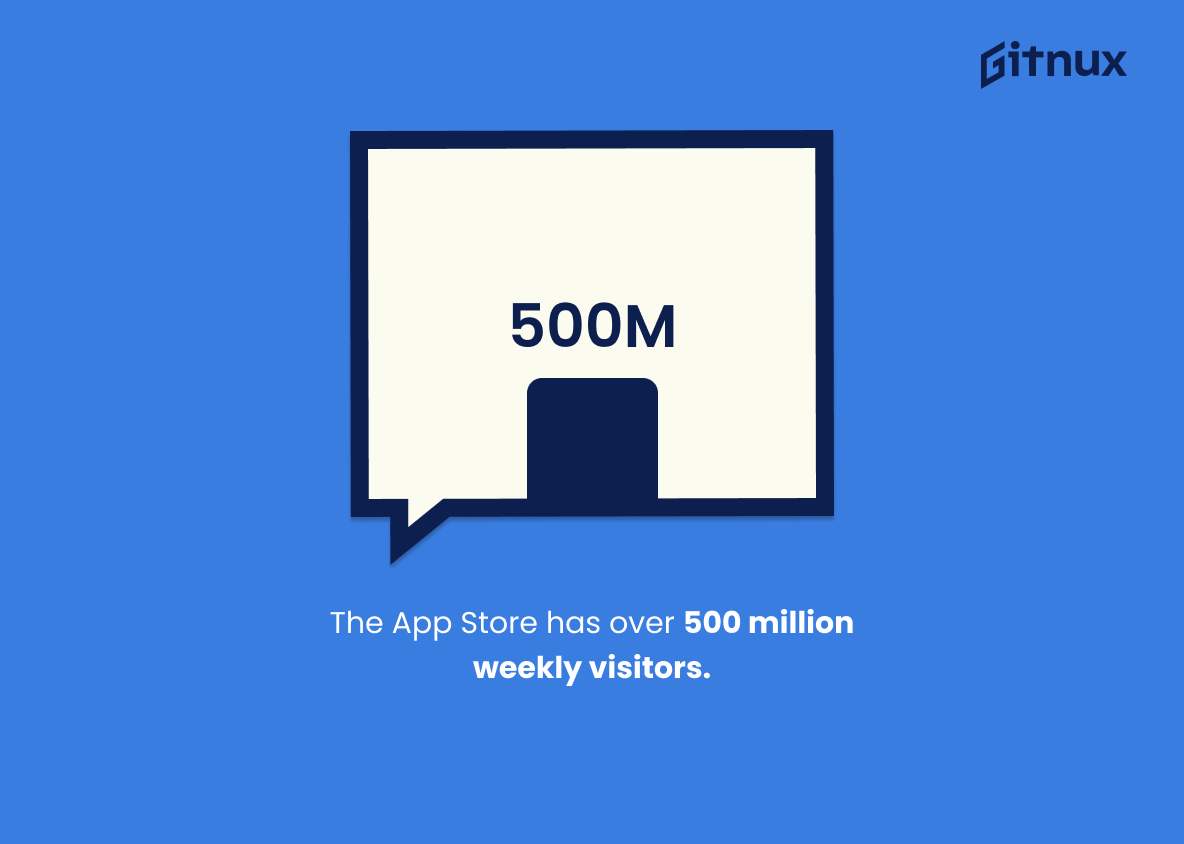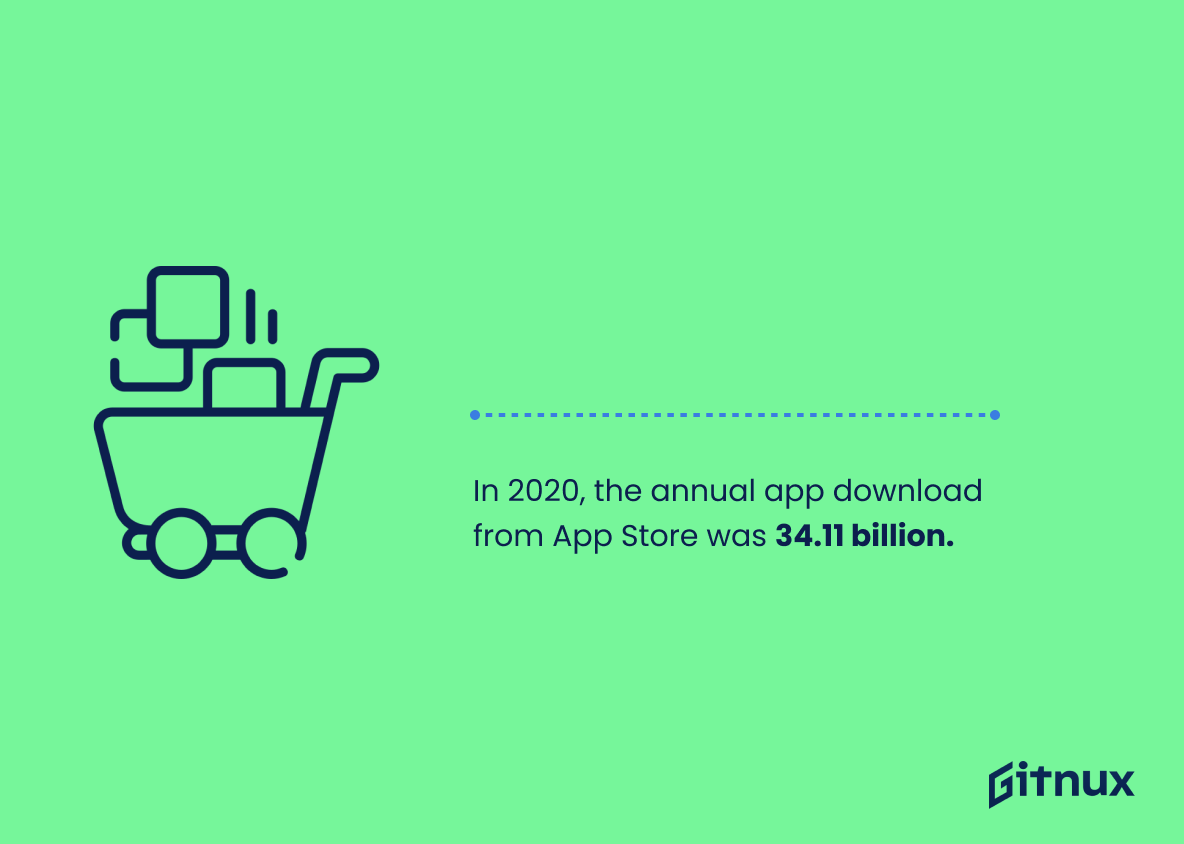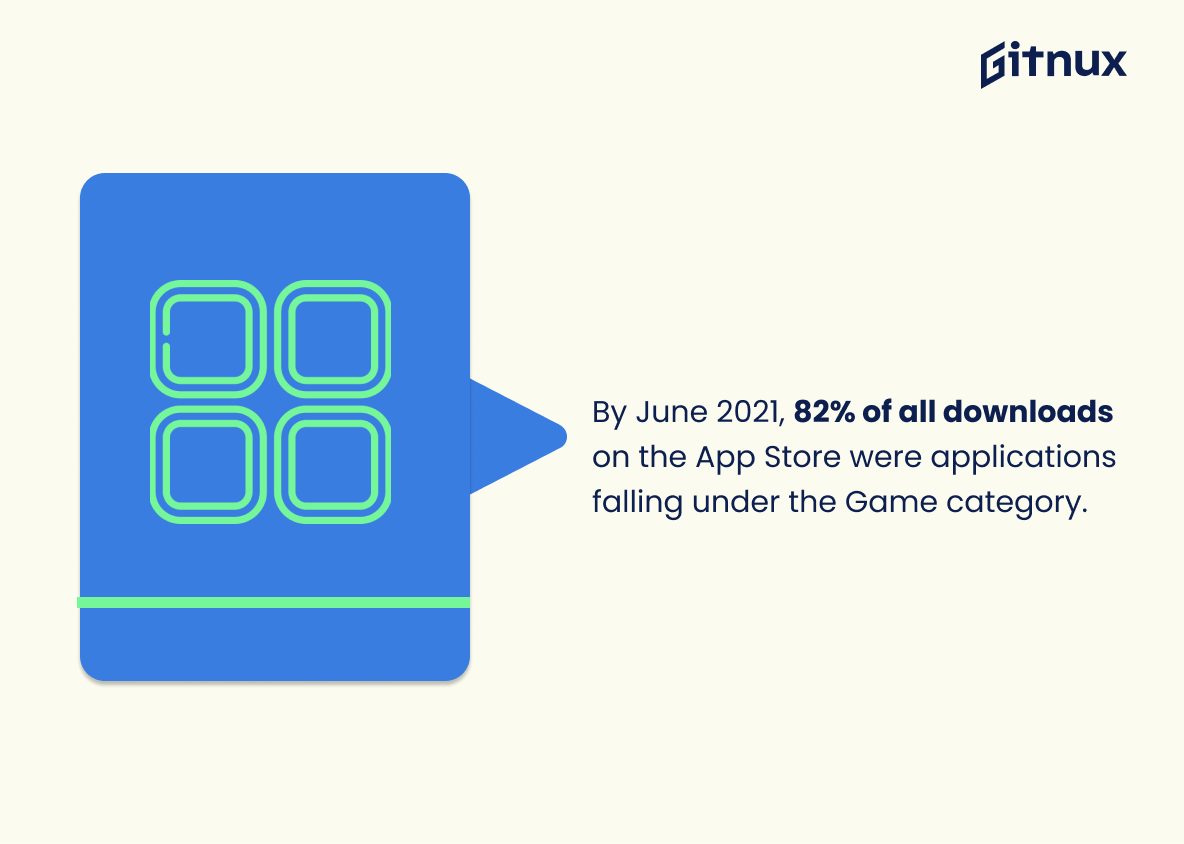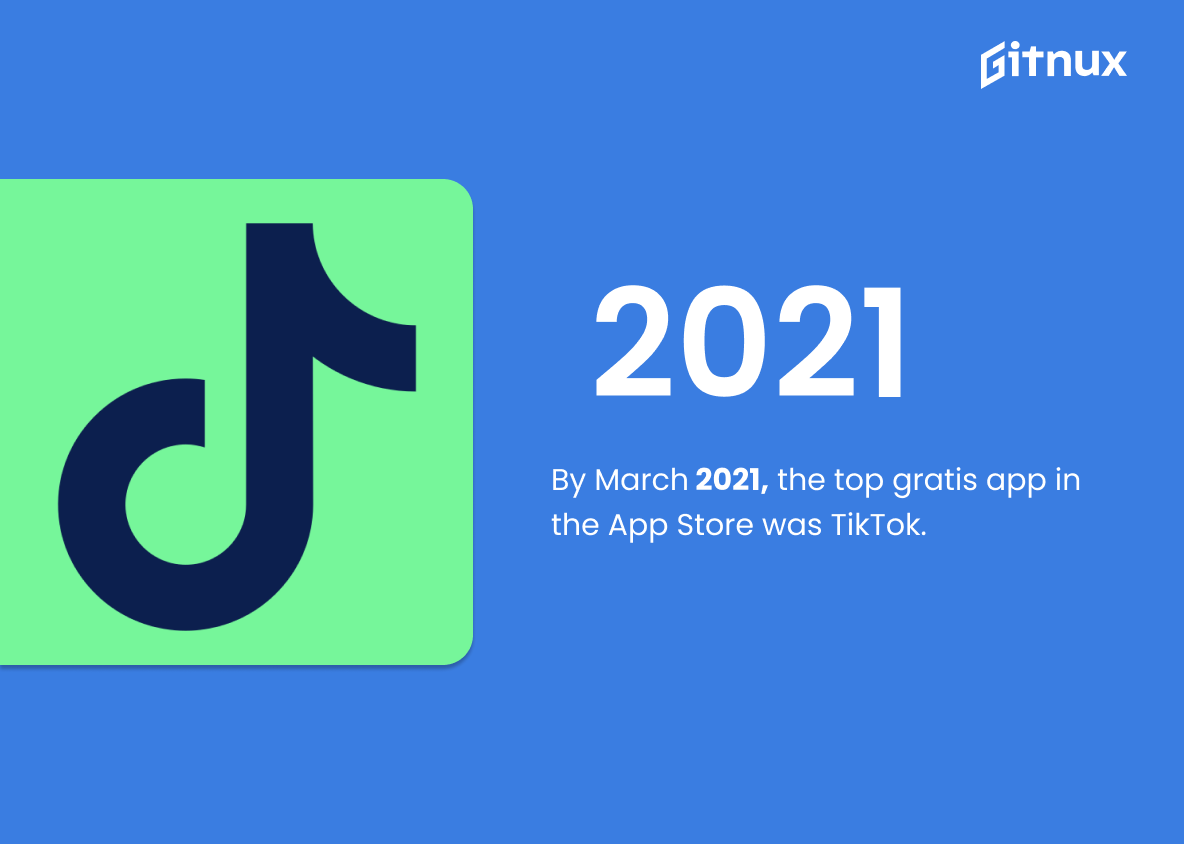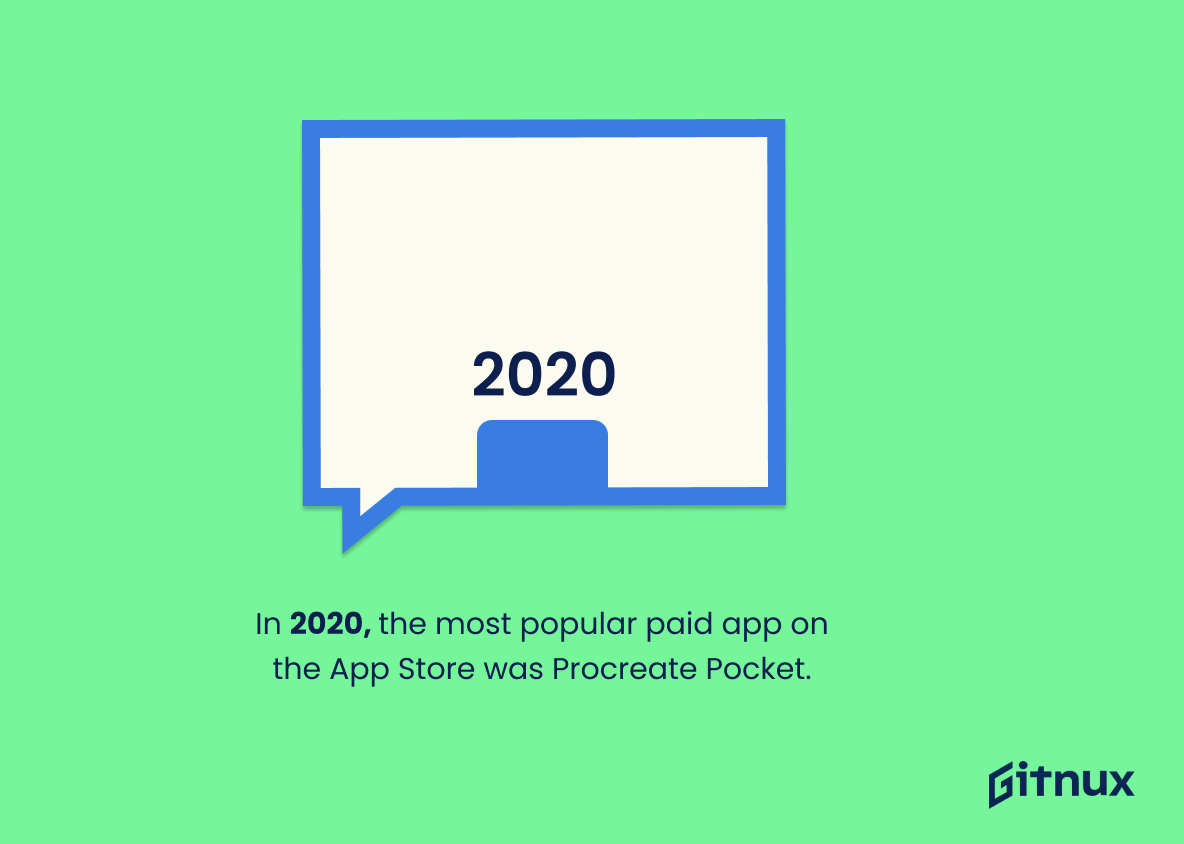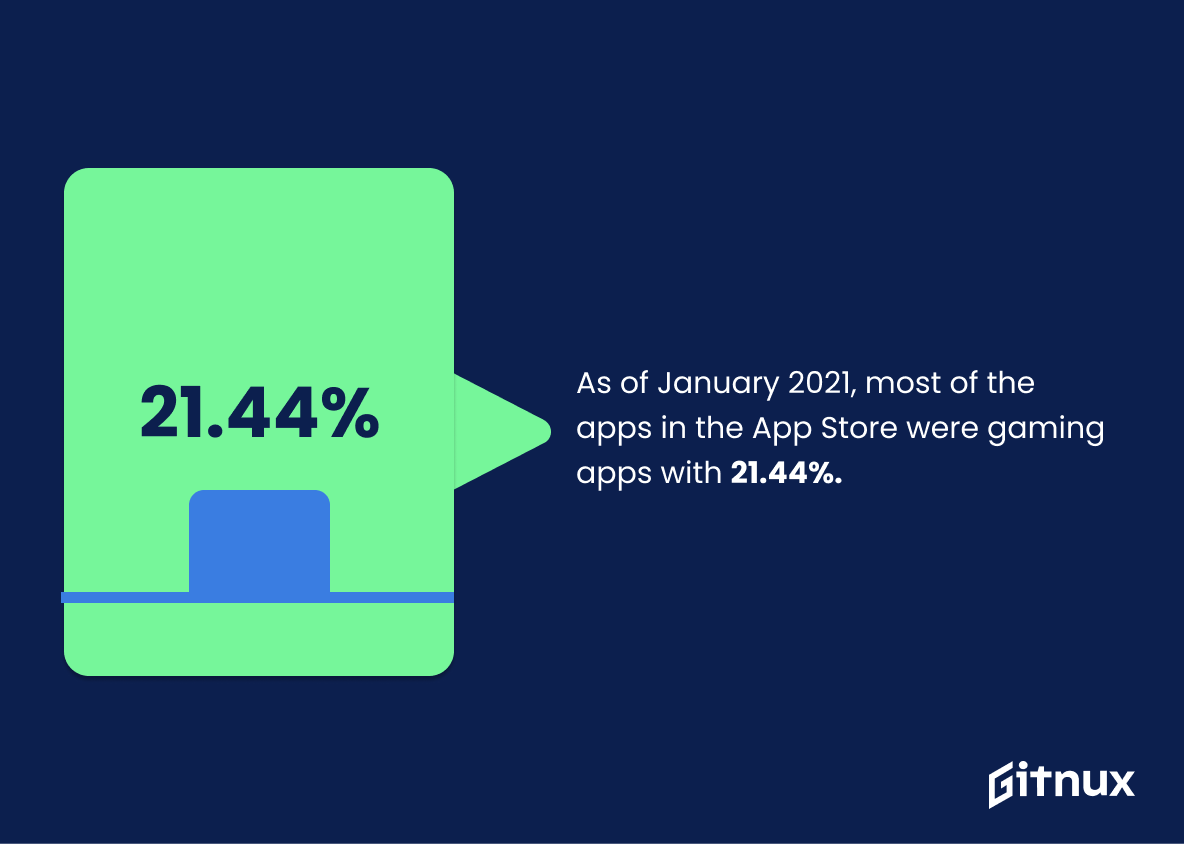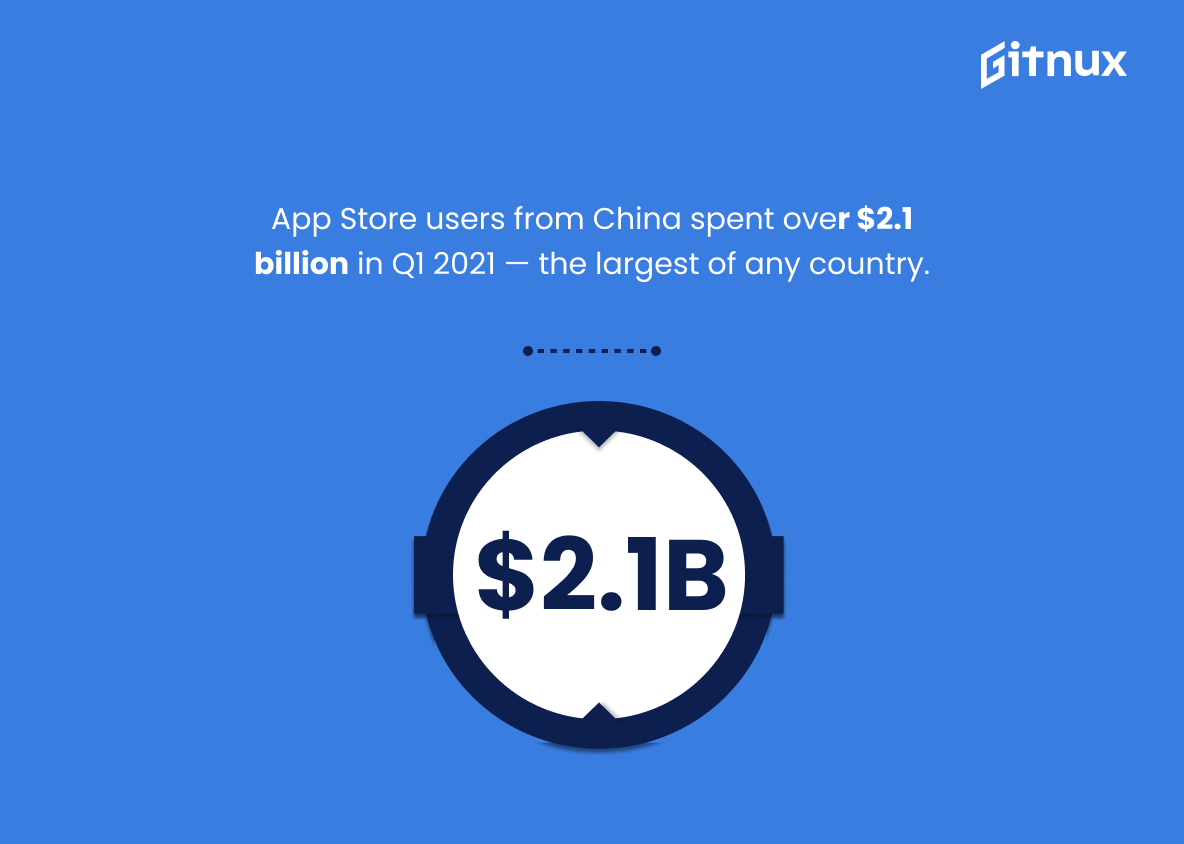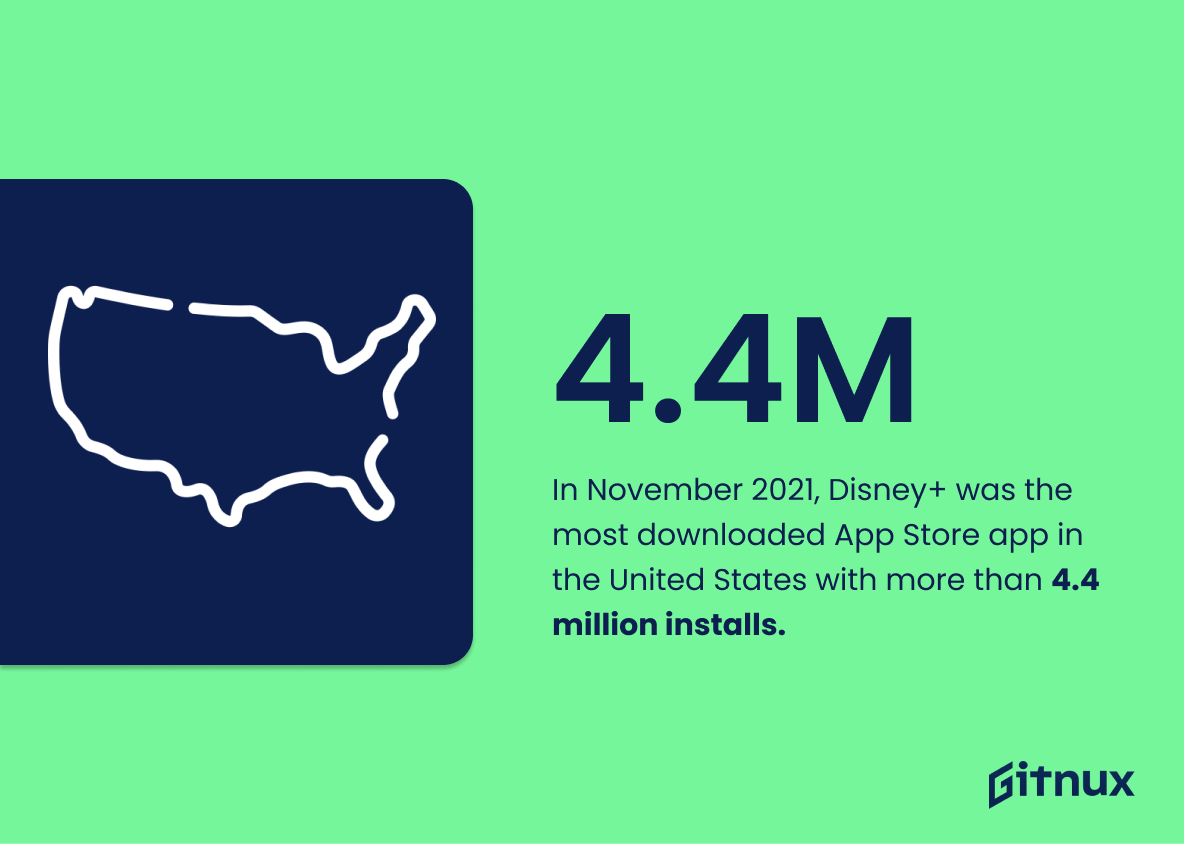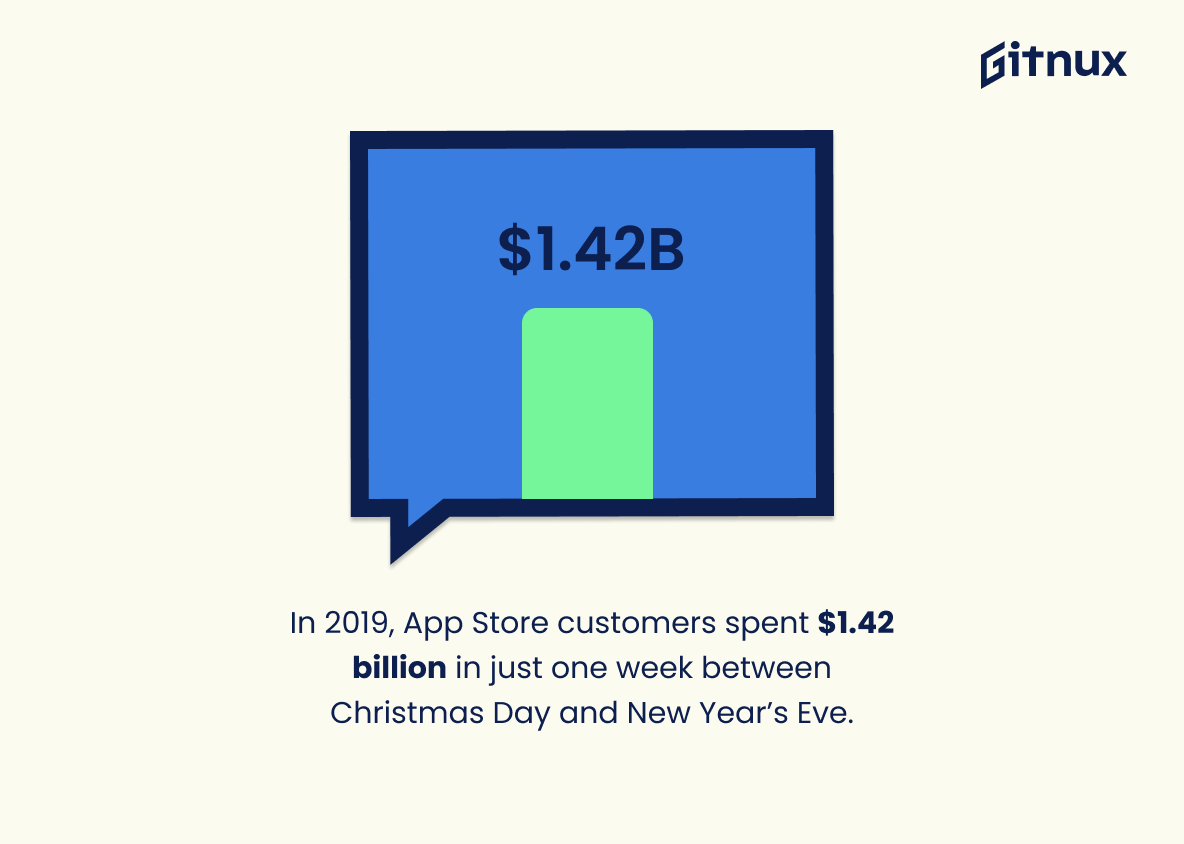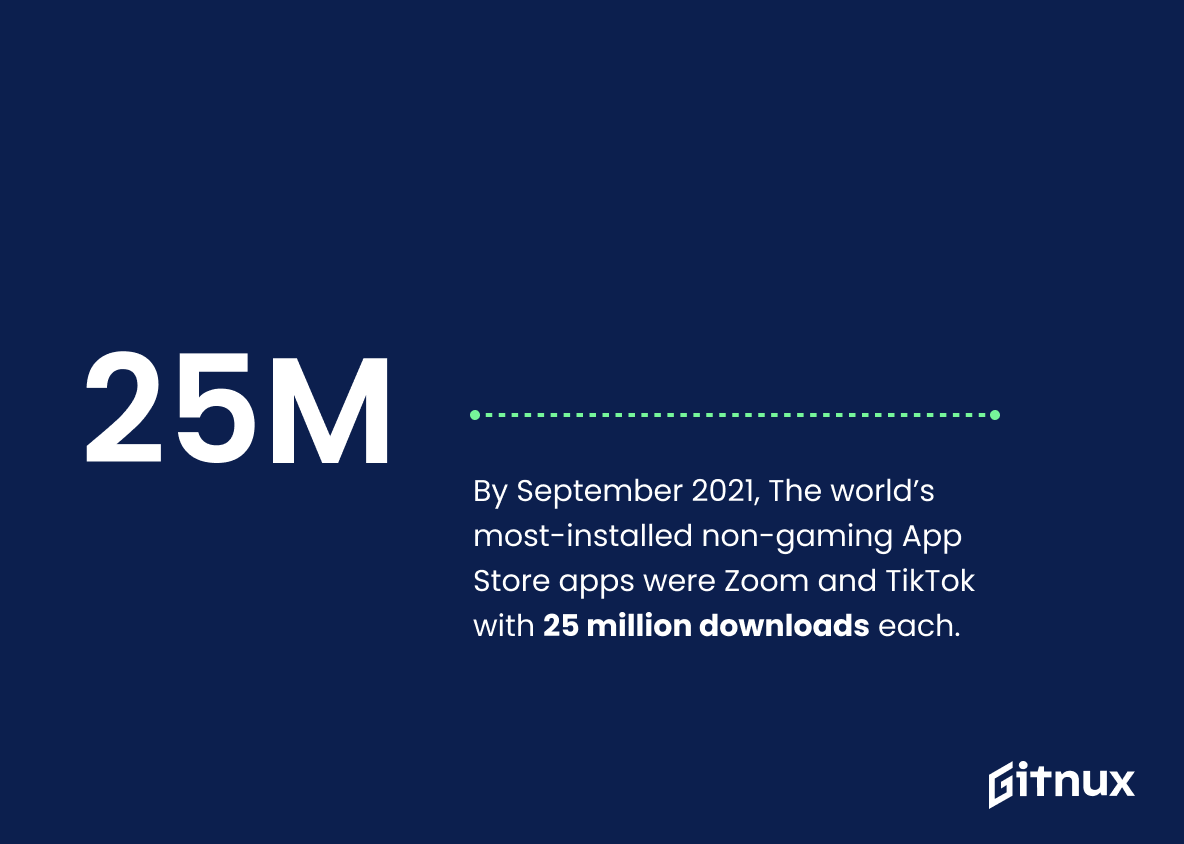Dive into the fascinating world of mobile applications with our comprehensive guide on App Store App Statistics. With more than 2 million apps available on Apple’s App Store, understanding app statistics has become critical for developers, marketers, and tech enthusiasts alike.
This blog post unravels key insights, trends, and data that shape the ever-evolving app landscape. From download numbers to user engagement rates, app category performances, to revenue statistics, we provide a holistic view of the App Store’s expansive ecosystem. Join us as we decode exactly how these virtual tools have grown to become such an integral part of our daily lives.
The Latest App Store App Statistics Unveiled
As of the third quarter of 2021, there were over 3.8 million apps available for download on App Store.
Painting a vivid picture of the highly competitive landscape that characterizes the App Store as of the third quarter of 2021, this statistic underscores a staggering reality of 3.8 million apps vying for user attention and downloads. The sheer volume of options available to users highlights both the opportunities for innovation and the stark challenges that developers continually grapple with.
In the dynamic world of App Store statistics, this number stands as a testament to the scale of competition, the importance of standout strategies in app development and marketing, and the constant evolution in user preferences. Hence, to navigate this bustling digital marketplace effectively, a deep understanding of, and engagement with this statistic is essential.
The App Store has over 500 million weekly visitors.
Delving into this impressive figure of 500 million weekly visitors, it unfurls an intriguing panorama of the App Store’s astounding reach and popularity. It becomes a compelling proof of its potent ecosystem where new apps face an upbeat audience restless for fresh digital experiences. It drastically magnifies the probability for successful app downloads, user engagement, and revenue generation.
It paints a promising picture for app developers, to jump at the opportunity to tap into this bustling marketplace, further underscoring the value and significance of understanding App Store app statistics. Hence, this critical number is not just a statistic but a testament to the App Store’s sheer power and potential.
In 2020, the annual app download from App Store was 34.11 billion.
Well, imagine this: 34.11 billion. That’s a staggering number, isn’t it? Now imagine each of these as a separate app download from the App Store in the galactic year of 2020.
It is indeed a cosmos of applications downloaded from Apple’s star-studded galaxy.
When we dive deep into this universe of applications, this particular statistic of 34.11 billion is the North Star directing our spaceship. It signposts a flourishing application marketplace that is teeming with activity and incessant user engagement. It’s a testament to the relentless growth and the evolving dynamism of the App Store.
This data serves as an essential foundation for sharing insights on popular trends, influential factors promoting growth, user behavior, and other intriguing aspects concerning the App Store. It provides the context for understanding the force of gravity bringing user and apps together in this astronomical App Store ecosystem. So, as we venture forth into the nitty-gritty of App Store App Statistics in this blog post, keep the magnitude of this number in mind – 34.11 billion. It’s the big bang moment that sparked countless digital revolutions.
By June 2021, 82% of all downloads on the App Store were applications falling under the Game category.
Illuminating the vast digital landscape, this captivating statistic offers a lens through which we can gaze upon the realm of the App Store. The revelation that an overwhelming majority – 82%, to be precise – of downloads center around the gaming category as of June 2021, emerges like the hero in our narrative of App Store App Statistics.
This intriguing piece of data invites us to focus on the undeniable appeal and magnetic allure of game applications among the app users, making us question – What is the magical wand that makes game apps so irresistible? It engenders a deeper understanding of user behavior, shines a spotlight on market trends and growth potential in the gaming sector, and underlines the significance of game developers in the App Store ecosystem. Therefore, if you are a budding developer or an interested stakeholder, this statistic is a treasure chest of insights waiting to be unlocked.
The App Store ecosystem facilitated $643 billion in billings and sales during 2020.
Delving into the colossal figure of $643 billion in billings and sales funneled through the App Store ecosystem in 2020 uncovers the titanic economic impact and growth of this platform. This figure serves as a testament to the App Store’s impressive ability to drive commerce, catapulting it as an epicenter of digital transactions. Transcending mere utility, this pecuniary prowess positions the app store at the forefront of digitization, monetization, and technology-backed evolution, perfectly illustrating the increasing gravitation of marketplace towards virtual platforms.
It portrays a compelling narrative of the powerful economic influence wielded by the App Store in shaping market trends and consumer behaviors around the globe, further underlining the pivotal role of App Store stats in shaping future business strategies and growth trajectories.
By March 2021, the top gratis app in the App Store was TikTok.
Such a statistic holds prominence as it paints a vivid picture of the prevailing trends and preferences in the App Store. It illustrates the remarkable performance and dominance of TikTok, suggesting that social networking apps are becoming a mainstay for mobile users.
This insight could assist app developers and investors to gauge where the pendulum of user preference is swinging. Furthermore, these statistics can also serve as a potent fundamental knowledge foundation for those aiming to gain an in-depth understanding of the evolving dynamics of the App Store.
In 2020, the most popular paid app on the App Store was Procreate Pocket.
Highlighting the triumph of Procreate Pocket as the most popular paid app in the App Store in 2020, rejuvenates our understanding of the App Store ecosystem and its trends. With a spotlight on this statistic, readers can gain insights into crucial elements such as user preference, spending patterns, and the relevance of certain app categories.
This furthermore sets the stage for app developers looking to secure their spot at the top of the App Store charts, ensuring their strategies align with consumer tenets. Beyond just numbers, this statistic echoes the pulse of the App Store market, indispensable for anyone hoping to navigate its landscape successfully.
The average price for an app in the App Store is $1.02 as of 2020.
In the sprawling digital bazaar of the App Store, where millions of developers hawk their software wares, the median price point can help paint a comprehensive picture of the marketplace’s economic landscape. The $1.02 average app price in 2020 acts as a yardstick, reflecting not just the pricing strategies of individual developers, but potentially their confidence in the perceived value of their products.
It could influence consumers’ expectations, developers’ pricing decisions, and even App Store’s future policies. A shift towards upward or downward could signify changes in consumers’ disposable money for apps, developers’ risk-taking abilities, and shifts in demand. As such, this figure quenches our curiosity, helping us trace the pulse of the App Store economy, one cent at a time.
As of January 2021, most of the apps in the App Store were gaming apps with 21.44%.
In the rapidly evolving landscape of mobile applications, the statistic showing that as of January 2021, the lion’s share of apps in the App Store is commanded by gaming apps—accounting for 21.44%—sheds light on compelling insights. Firstly, it underscores the predilection of a growing number of users towards gaming applications, vividly illustrating the immensity of the gaming industry in the mobile application market.
This revelation could be significant for developers, users, and stakeholders interested in App Store dynamics, steering them to invest in, develop, or explore more gaming apps, respectively. Moreover, it lends credibility to the promotional strategies of gaming apps. Finally, it forms a basis for future predictions of potential trends in the App Store, guiding the way for advancements and innovations in the mobile application space.
App Store users from China spent over $2.1 billion in Q1 2021 — the largest of any country.
The aforementioned data point illuminates the massive consumer potential in the Chinese market, underscoring its significance in the world of App Store revenues. A staggering sum of over $2.1 billion spent by App Store users from China in Q1 2021 is indicative of its crown position as the highest spender, eclipsing other nations. This substantial contribution presents a compelling narrative about the pivotal role of Chinese users in driving App Store’s monetary success.
In the context of a blog post about App Store App Statistics, this is a strong manifestation of market trends, user demographics, and consumption patterns — revealing a remarkable spending appetite of Chinese users. It points app developers, investors, and stakeholders towards a geographically potent space teeming with lucrative opportunities. Indeed, ignoring such colossal figures could be a missed opportunity.
In November 2021, Disney+ was the most downloaded App Store app in the United States with more than 4.4 million installs.
A pivotal implication from the statistic that Disney+ dominated the App Store as the most downloaded app across the United States with 4.4 million installs in November 2021, highlights a significant trend in market preference for entertainment and streaming services. Serving as a testament to the broad appeal and successful programming of Disney+, these figures emblazon the extent of the app’s ascendancy and adoption, thus bringing great insights to the realm of app statistics.
Moreover, it underscores the increasing dominance of digital entertainment players in the app market segment and provides a real-time case study of consumer behavior and acceptance. The data serves to set meaningful benchmarks for app developers and strategists, offering possibilities to gauge market potential and adopt successful trajectories.
In 2019, App Store customers spent $1.42 billion in just one week between Christmas Day and New Year’s Eve.
Examining the gargantuan spending of App Store customers, which amounted to $1.42 billion in the holiday week alone between Christmas and New Year’s Eve in 2019, offers a fascinating insight into the explosive growth and revenue potential within the app marketplace. This figure intricately paints a picture of consumer behavior, suggesting that the said period might serve as a booming sales window for app developers and marketers.
This not only signals the vast profitability within the App Store but also illustrates the profound effect that seasonality and holiday periods have on spending habits in the digital space. It further emphasizes a trend where users are increasingly willing to invest in mobile applications, underlining the continuous evolution and relevance of the App Store in our increasingly digital world.
By September 2021, The world’s most-installed non-gaming App Store apps were Zoom and TikTok with 25 million downloads each.
An insightful dive into the realm of App Store apps reveals a thrilling duel for dominance. As of September 2021, the landscape was captained by none other than Zoom and TikTok, each boasting an impressive victory lap of 25 million downloads. This piece of information is akin to the pulse of the market, broadcasting to us the user preferences and demonstrating the strength of these platforms.
It offers a clear snapshot of the ongoing trends, user behavior, and the popularity of communication and entertainment apps. Thus, in the grand narrative of App Store App Statistics, it plays the role of a crucial chapter, confirming the enduring appeal of these apps, and their ability to adapt and thrive in a constantly evolving digital world. If you’re navigating the sea of app trends and market demand, this is one lighthouse you cannot afford to ignore.
In 2018, the estimated mobile app revenues of the App Store was $46.6 billion.
The revelation of the App Store’s staggering estimated mobile app revenues of $46.6 billion in 2018, isn’t merely about impressive numbers. It paints a vivid picture of how powerfully and indelibly apps influence today’s digital economy.
Dissecting this statistic, we unearth narratives of innovations turning into commercial success, of developers finding a lucrative platform and of consumers actively participating in the digital marketplace, thereby propelling growth of the App Store. This statistic is a testament to App Store’s integral role in the evolution of the digital landscape, making it an essential ingredient in any conversation about App Store App statistics.
It was estimated that gaming apps on the App Store generated over $22 billion in revenue during first half of 2019.
Delving into these numbers reveals a treasure trove of insights. The staggering $22 billion in revenue accrued from gaming apps on the App Store in the first half of 2019 vividly paints a picture of the astronomical potential encompassed within this digital playground. The weighty financial impact sharpens focus onto the thriving digital economy, with gaming apps taking the lion’s share.
It also underscores the immense profitability for developers and tech companies willing to brave the bustling, competitive cauldron of the App Store. This striking figure also personifies the growing enthusiasm for apps amongst users, revealing that not only is this industry here to stay but, it is priming for an explosive growth.
About 80 percent of the apps on the Apple App Store are free to download as of Q3 2021.
The revelation that nearly 80 percent of apps on the Apple App Store are free to download as of Q3 2021 presents a treasure trove of possibilities for consumers. In a world obsessed with instant gratification, this data highlights the generous accessibility Apple provides to a plethora of applications, be it games, productivity tools, and other offerings, without putting a strain on our wallets.
For developers and businesses, this emphasizes the competitive landscape of the App Store, driving them to continuously innovate to stand out, or devise alternative monetization strategies such as in-app purchases or advertising. Thus, understanding this dynamic not only illuminates the consumer advantages, but also the challenges and avenues available to developers in the thriving App Store ecosystem.
The App Store and Google Play generated a combined $171 billion in consumer spending in 2021, a 19.6% increase from 2020.
Peeling back the veil of numerology, we can perceive an undulating surge of $171 billion in consumer spending in 2021 between the App Store and Google Play, providing an astonishing testament to the burgeoning app ecosystem. This figure, not just a detached data point, marks a 19.6% growth from the preceding year, shedding helpful light on the escalating traction in this domain.
Eminent in a blog post about App Store App Statistics, this data adds value as it underpins the multidimensional financial potency and the expansion of the app industry, ushering marketers, developers, investors, and strategists to harness these pulsating trends to further optimize their intervention in this space. This data is a golden opportunity to understand the high-velocity digital highway these platforms represent and the potential profit avenues that remain unexplored.
In 2020, the App Store had 885,000 game publishers.
Undeniably, the revelation that a whopping 885,000 game publishers were populating the App Store in 2020 can induce a double-take. This figure sets the stage for comprehending the sheer volume and immense competitive landscape that envelops the App Store. With such high numbers, it underlines the dynamic, vibrant, and competitive nature of this platform.
Equally important, it highlights the pluralistic output of game developers and the diversity that awaits gamers, which, in turn, could be leveraging the overall engagement of users with the App Store. Lastly, it provides an essential context for potential developers, highlighting the challenging yet rewarding realm of the App Store and the necessity for unique and engaging gaming experiences to stand out in this crowded market.
According to the Apple App Store guidelines, 60% of submitted apps are initially rejected due to non-compliance.
Clearly, the significance of this statistic won’t escape anyone delving into the intricacies of App Store App Statistics. It magnificently highlights the rigorous and stringent screening processes followed by Apple. Non-compliance leads to an initial rejection rate of 60%, signifying the high quality and standard Apple maintains for its App Store.
When a bold number presents such high rejection rates, it becomes an eye-opener for aspiring developers, encouraging them to adopt Apple’s compliance measures for better chances of approval. Furthermore, for consumers, knowledge of such statistic instills a sense of trust in the apps downloaded from Apple App Store knowing that each has passed through a meticulous examination process.
As of 2019, Netflix, Tinder, and Tencent Video were the three highest-earning non-game apps on the App Store.
Highlighting the fact that as of 2019, Netflix, Tinder, and Tencent Video crowned the list of highest-earning non-game apps on the App Store provides a crucial lens into the lucrative landscape of mobile apps. This datum not only signifies the dominance of entertainment and dating platforms in today’s digital realm, but it also reveals consumers’ willingness to invest in premium app experiences.
This emerging trend suggests an intriguing shift in app revenue generation, widening the horizon beyond just gaming apps. Furthermore, this point of knowledge could serve to guide developers and investors by revealing potent industry sectors and potential streams of revenue in the burgeoning App Store ecosystem.
Conclusion
In a rapidly evolving digital landscape, App Store statistics provide us with invaluable insights into the market trends, user preferences, and the global influence of the mobile app industry. These statistics are not just numbers, but a strategic resource that can guide developers, marketers, and businesses alike in making informed decisions.
The increasing number of apps, downloads, in-app spending, and the influence of customer reviews underline the significant role mobile apps play in our lives. As we dive deeper into the era of digital transformation, one thing is clear – the app industry, led by the App Store, is here to stay, grow, and continue to reshape our digital experiences.
References
0. – https://www.www.sensortower.com
1. – https://www.www.statista.com
2. – https://www.www.apple.com
3. – https://www.9to5mac.com
4. – https://www.sensortower.com
5. – https://www.www.businessofapps.com
6. – https://www.www.gamesindustry.biz
7. – https://www.www.pocketgamer.biz
8. – https://www.developer.apple.com
